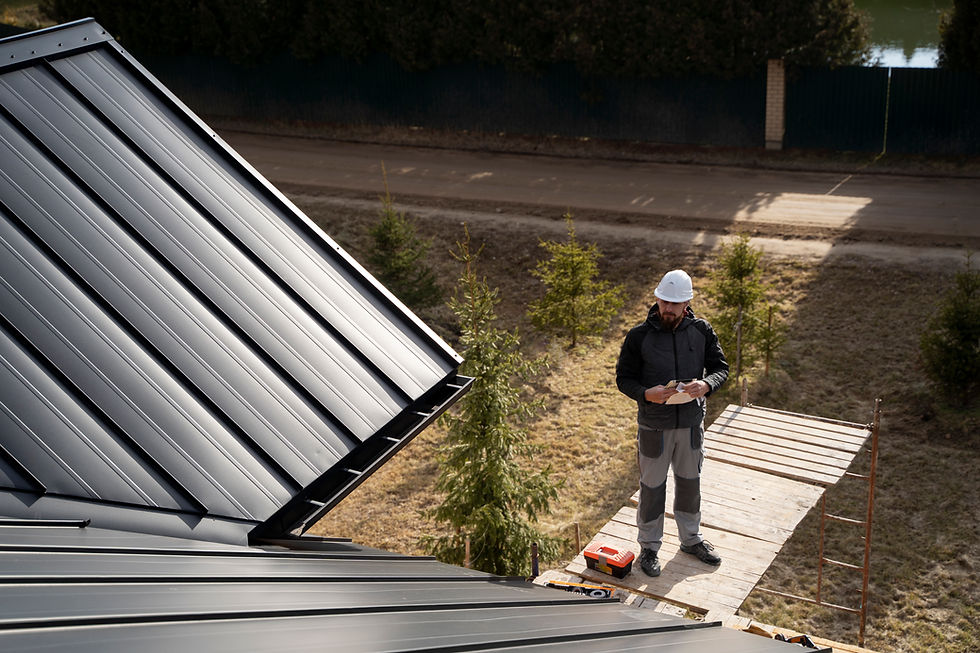Installing a Slate Roof: What Homeowners Should Know
- John Shaw
- Jul 16
- 3 min read
When it comes to combining elegance with durability, few roofing materials can compete with a slate roof. Known for its timeless charm and natural strength, slate roofing has long been favoured by homeowners looking to invest in a long-lasting solution for their property. However, before deciding on this premium roofing material, it’s essential to understand the full scope of what installing a slate roof entails.

Understanding the Basics of a Slate Roof
A slate roof is made from natural stone tiles, quarried and shaped for roofing use. The result is a high-end finish that not only boosts kerb appeal but can also last for over a century with proper maintenance. Many roofers recommend slate as a top-tier choice for period properties and contemporary homes alike due to its longevity and classic appearance.
While the upfront cost may be higher compared to standard materials, a slate roof often outlasts alternatives such as asphalt or synthetic tiles. Its durability also makes it particularly suitable for pitched roofing, offering excellent protection against rain, snow, and wind.
Why You Need a Skilled Roofer
Unlike other types of roofing, installing a slate roof is not a typical DIY job. It demands the expertise of a skilled roofer who understands the specific requirements of handling natural stone. The process involves precision, proper underlay installation, and an understanding of weight distribution since slate is significantly heavier than conventional roofing materials.
Choosing an experienced roofer is critical. A poorly installed slate roof can lead to cracked tiles, leaks, and costly repairs down the line. When selecting a contractor, look for credentials, local reviews, and examples of previous slate roof installations. Many professional roofing companies will also offer insight into the maintenance and future roof repairs your home might need.
Pitched Roofing and Structural Support
Pitched roofing is the ideal setup for a slate roof. The angle of the pitch allows water to run off efficiently, minimising moisture retention and preventing long-term damage. However, because slate is a dense and heavy material, your home must have the proper structural support in place before installation.
A roofer will typically assess your current roof framing and advise on any reinforcements needed. Some homes may require additional beams or bracing to accommodate the added weight of slate tiles. Although this adds to the initial cost, it ensures safety and long-term performance.
What About Flat Roofing and Slate?
While slate is traditionally used for pitched roofing, it’s not ideal for flat roofing. Flat surfaces don’t allow for proper drainage, increasing the risk of water pooling and eventual damage. Homeowners with flat roofs should consider other materials better suited for that structure, such as membrane or bitumen roofing. That said, a flat roofing specialist may still be required for adjoining roof sections or unique architectural features during the installation process.
Slate Roof Maintenance and Repairs
One of the most attractive features of a slate roof is its minimal maintenance. However, periodic inspections are still necessary to identify any cracked or missing tiles. A professional roofer can carry out roof repairs quickly, ensuring small issues don’t turn into major problems.
Seasonal checks, especially after storms or heavy weather, are highly recommended. In many cases, a few replacement tiles are all that’s needed to restore the roof’s integrity.
Final Thoughts
Choosing a slate roof is a long-term investment that offers both aesthetic and practical benefits. From its natural beauty to its resilience, slate is a smart choice for homeowners who value quality and tradition. Whether you’re upgrading your pitched roofing or working with a flat roofing specialist on a mixed-style property, expert installation and proper structural support are key.
Work with a qualified roofer to ensure your slate roof stands the test of time—and weather. With the right guidance and materials, your roof can become one of the most striking and durable features of your home.


Comments